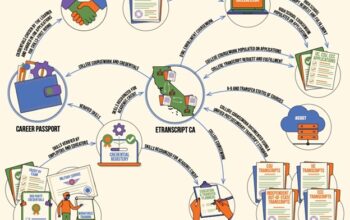Guv Arnold believed in hydrogen power. So he used tax dollars to install a few hydrogen charging stations in the State—at the cost of one million dollars each. This, even though there were under 100 hydrogen vehicles in the nation. We are still paying for his arrogance.
“Assemblymember Eloise Reyes (D-Colton) and Senator Lena Gonzalez (D-Long Beach) are proposing to halve the Energy Commission’s roughly $20 million annual earmark for light-duty hydrogen vehicle infrastructure, which the industry has relied on to establish the country’s largest network of fueling stations.
“We don’t want to leave money encumbered because that’s money that could be used for other EV stations or technology-neutral stations,” Reyes said in an interview.
After more than a decade and some $116 million of state support, California has 63 publicly accessible fueling stations for hydrogen cars. It also has about 12,000 hydrogen passenger cars on the road — by far the most of any state, with about 40 percent of global market share in 2022. That’s still only about 1 percent of California’s zero-emission vehicles.
Have you ever seen a hydrogen car on a car lot? Yet, we are spending millions for things that do not exist. Now you know why California is in a doom loop.
Is this the end of the hydrogen highway?

A legislative fight over funding for hydrogen stations could be the fuel’s last gasp for passenger vehicles.
By BLANCA BEGERT, Politico, 8/15/23 https://www.politico.com/news/2023/08/15/california-hydrogen-cars-00111323
A fight over funding for fueling stations could mark the beginning of the end for costly and energy intensive hydrogen-powered passenger cars in California.
Oil companies and environmentalists are in a tug-of-war over CA AB241 (23R), which would reduce dedicated funding for hydrogen passenger vehicle fueling stations and open up more support for electric vehicle infrastructure.
Assemblymember Eloise Reyes (D-Colton) and Senator Lena Gonzalez (D-Long Beach) are proposing to halve the Energy Commission’s roughly $20 million annual earmark for light-duty hydrogen vehicle infrastructure, which the industry has relied on to establish the country’s largest network of fueling stations.
“We don’t want to leave money encumbered because that’s money that could be used for other EV stations or technology-neutral stations,” Reyes said in an interview.
After more than a decade and some $116 million of state support, California has 63 publicly accessible fueling stations for hydrogen cars. It also has about 12,000 hydrogen passenger cars on the road — by far the most of any state, with about 40 percent of global market share in 2022. That’s still only about 1 percent of California’s zero-emission vehicles.
And their market share is staying stagnant as electric vehicles take off: Hydrogen made up about 1 percent of zero-emission sales in the first quarter of 2023, even as zero-emission vehicles made up 25 percent of new-car sales overall. Toyota and Hyundai are the only automakers selling hydrogen fuel cell cars in California.
Environmental groups, as well as some automotive industry representatives, say California has propped up hydrogen long enough and should declare electric vehicles the winner for light-duty use — or at least open up state funding so hydrogen projects have to compete directly against electric ones.
“Battery electric seems to be where companies are going, where consumers are going,” said Orville Thomas, policy director for CALSTART, a nonprofit consortium of zero-emission automotive companies. The group includes hydrogen and battery electric members, but it’s come out as a leading supporter of Reyes’ bill.
Hydrogen advocates are lobbying to stall the bill, which requires a two-thirds vote to pass because it increases state-imposed fees. The bill is the final piece of Gov. Gavin Newsom’s infrastructure package, which included bills to fast track clean-energy permitting and expedite judicial review.
Light-duty hydrogen cars and infrastructure are also eligible for money from the general budget, greenhouse gas auction proceeds and the state’s low-carbon fuel standard. But automakers and fuel manufacturers value the CEC’s Clean Transportation Program for its stable funding levels.
On the federal level, momentum is behind medium- and heavy-duty hydrogen trucks and buses, but not light-duty passenger vehicles. While California has applied for a share of $8 billion in federal funding for hydrogen production under the Inflation Reduction Act, there isn’t a dedicated pot of money for light-duty hydrogen. Reyes’ bill would also open up the light-duty hydrogen earmark to heavy- and medium-duty trucks.
Light-duty “hydrogen infrastructure has no Plan B, nothing but the Clean Transportation Program, so the risks in Reyes’ policy change are very serious,” said Teresa Cooke, a lobbyist for the California Hydrogen Coalition, which includes Chevron, Shell, Linde, and Toyota. The group has asked that the program allocate $30 million to hydrogen annually for the next ten years to create 1,000 hydrogen fueling stations — far above the state’s goal of 200 stations by 2027.
Back in 2014, when the program was last reauthorized at roughly $100 million per year, lawmakers spread their bets almost equally between electric and hydrogen cars and added the 20 percent carveout for hydrogen.
“At that point, there wasn’t much sense of where the zero-emission passenger vehicle market was going to be,” Thomas said. “The idea was to allow hydrogen and battery electric to essentially go up against each other and fund both of those programs in a way that was actually going to be successful and then see where the market goes after that.”
There are several reasons hydrogen hasn’t taken off as a passenger fuel. One is the high cost — about $25 per kilogram in California — which car companies have had to heavily subsidize to make driving their vehicles feasible for customers. At that price, it costs about $135 to fill up a standard car, whereas charging an EV at a commercial station costs $10-30, which makes that option far more economical, even if it requires more frequent charging.
Part of the reason hydrogen is so expensive is it takes a lot of energy to produce. The Environmental Defense Fund calculates that it requires three to nine times the energy to power a hydrogen fuel cell vehicle as it does a battery electric one. The stations are also expensive: The Energy Commission notes that building a hydrogen fueling station costs $6.5 million, while an EV charging station costs about $110,000.
Questions about the carbon emissions associated with the fuel, which for now is still produced mostly by burning fossil fuels, also dog proposals to scale up the technology.
Observers expect the final bill language to land somewhere between 10 and 30 percent for hydrogen fueling stations. A companion bill, CA AB126 (23R), is also a potential vehicle. Bills have to clear the Legislature and head to Newsom by Sept. 10.
“There is going to be a small market for light-duty hydrogen,” Thomas predicted. “Is that market worthy of $30 million a year out of $110 million only for light-duty hydrogen? Probably not.”



